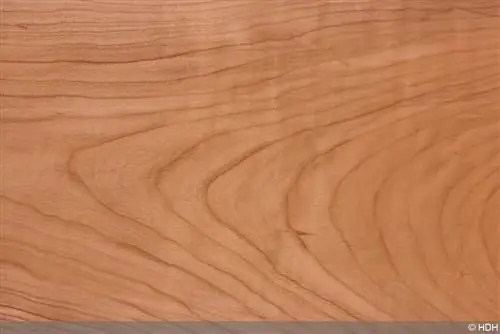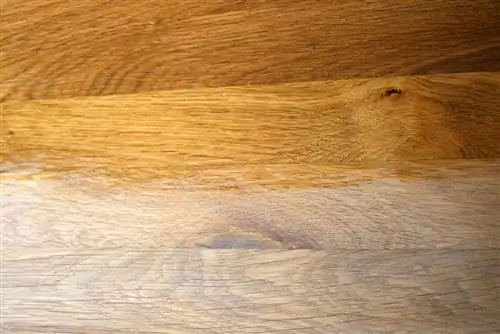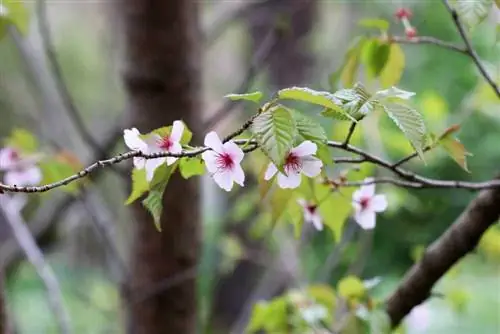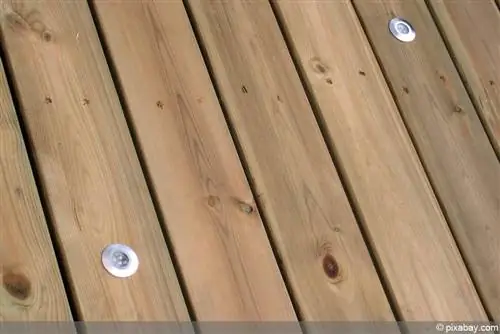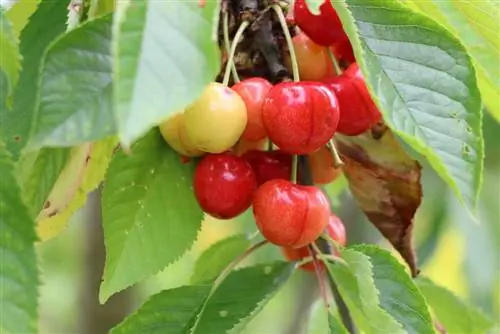- Author admin [email protected].
- Public 2023-12-17 03:39.
- Last modified 2025-01-24 12:45.
Cherry wood is particularly noticeable because of its attractive grain, but also has positive properties in terms of strength. This means that it is often used in interior design and premium class furniture construction. It is correspondingly expensive to purchase. Before buying, you should therefore take a close look at the properties. We reveal what these are.
Grain and color
Cherry wood has a very fine, delicate and soft wood radiation or grain. The color of the heartwood ranges between medium and dark brown; greenish and yellowish tones are possible and not unusual. Sapwood often has a combination of reddish, whitish or grayish nuances. This makes it appear cooler overall than the heartwood.
Properties and resistances
The wood only has medium hardness, but is very strong. It also proves to be extremely flexible or bendable. This means that the wood is often used in arts and crafts. It is also used in designer furniture and in musical instrument making. It is important that wood that is dried slowly and in a controlled manner is chosen. Otherwise it must be expected that the wood will warp - i.e. become deformed. However, steaming can reduce the risk of this and also improve the natural properties of cherry wood.
Tip:
It should also be noted that cherry wood is not resistant to fungi, weather and insects. So unless it is properly protected, it should not be used outdoors.
Species
The cherry wood naturally comes from the cherry tree, but there are different types. A distinction is made between European, American and Indian cherries. The European and American variants are quite common in European trade. Indian cherry wood, however, is rarely offered here.

The difference between the types of cherry wood is of course not only in their origin and name. However, the differences are mainly in the color and the raw density.
American Cherry
- is a little darker
- more often reddish colored
- Average bulk density: approximately 0.58 grams per cubic centimeter
European Cherry
- predominantly light and golden brown tones
- Average bulk density: about 0.54 grams per cubic centimeter
However, there are no differences in the other properties.
Price
If you want to buy the cherry wood, you are of course also interested in the price. There are clear differences here, especially in terms of origin. 1,000 to 1,200 euros must be budgeted for one cubic meter of European cherry wood. For the wood of the American cherry tree, even 1,500 to 1,700 euros per cubic meter are due.
Price differences are mainly due to storage and drying as well as possible pre-treatment, such as steaming. The dimensions of the cherry wood also play a role. Since there are significant fluctuations in costs, it is advisable to compare prices before purchasing.
Tip:
Remaining stocks and smaller sizes can sometimes be purchased much cheaper. Depending on the retailer, discounts are also possible for larger projects. In addition to the price of the cherry wood, the costs for shipping or delivery should also be taken into account.

